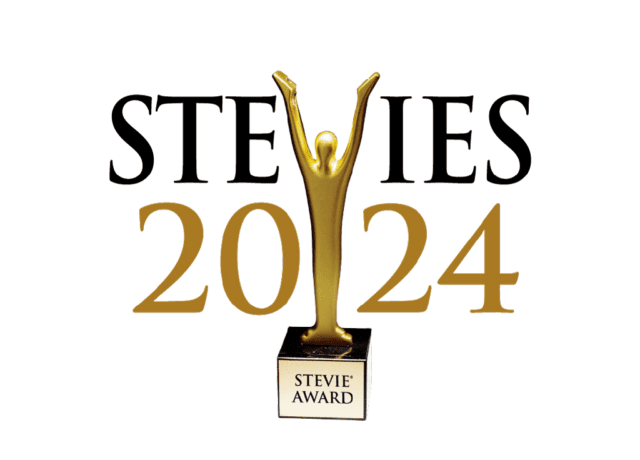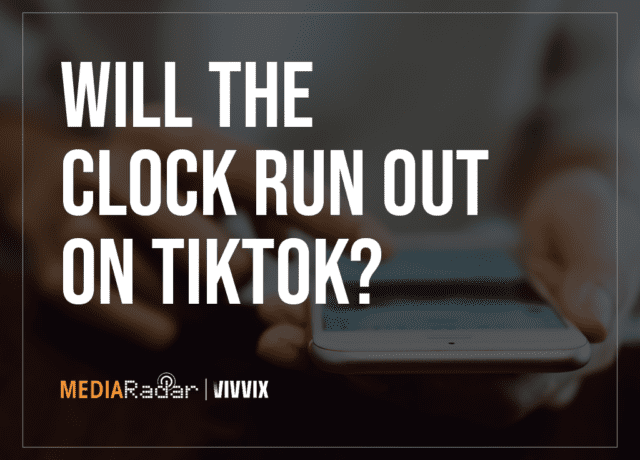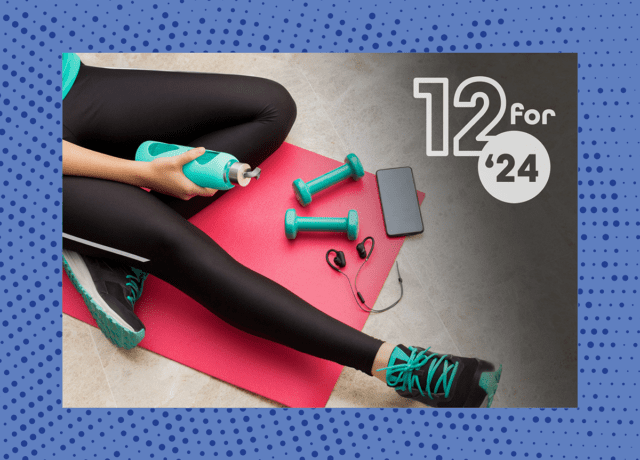Native advertising is more popular than ever, with spending jumping by 37% in 2021 and expected to reach $98.59b this year.
Its growth is far from surprising, given 85% of Internet users don’t see native advertising as an interruption, and two-thirds are more likely to click on sponsored content than banner ads.
Meanwhile, 68% of consumers trust native ads seen in an editorial context, compared to 55% for social media ads.
For publishers and their advertisers, it’s evident there is a perfect middle-ground that needs to be met when producing fair, clear, and engaging ads for consumers.
That’s where well-done native advertising comes in.
In this guide, we walk through native advertising guidelines, best practices, and specific examples of native ads that work.

Native Advertising in Action: Guidelines & Best Practices
We know that audiences don’t like to be bombarded or interrupted by advertising.
Ad types like pop-ups and autoplay video ads, for example, have never been popular among consumers and are often considered “annoying” and “disruptive.” (Ads on streaming services are considered the most “annoying.”)
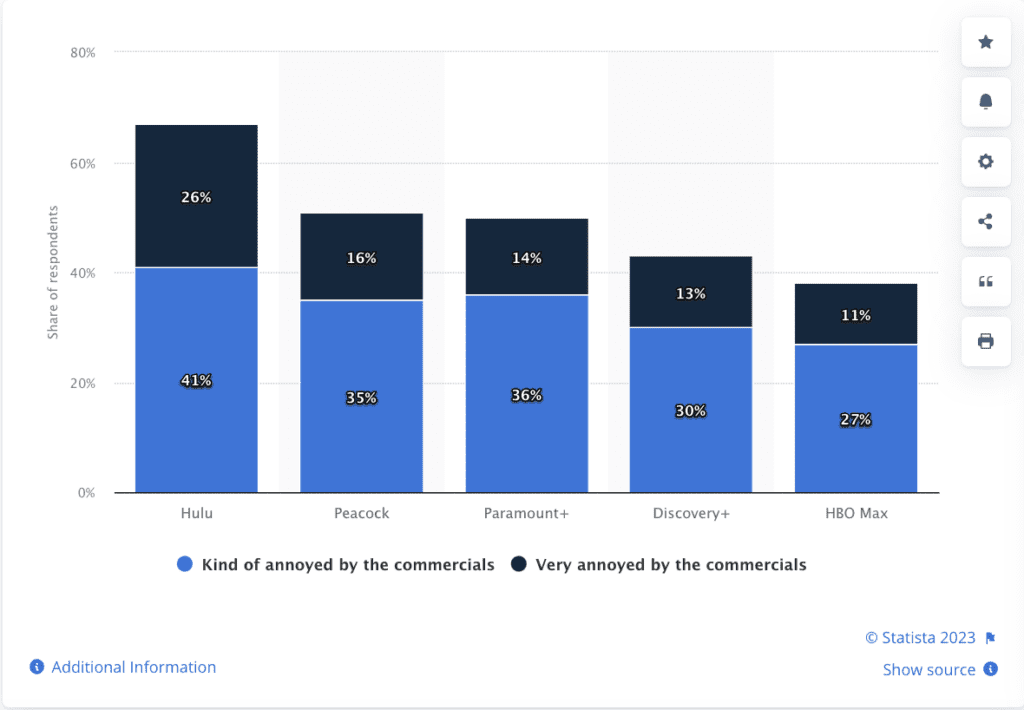
With the rise of native advertising, however, we now know that advertising can be too discreet.
Google loves native ads, but audiences don’t want to be duped into believing an ad is anything other than what it is.
To regulate this middle-ground, the Federal Trade Commission (FTC) released Native Advertising: A Guide for Business.
When considering native advertising, brands and publications should take the time to read through this guide from the Federal Trade Commission to ensure they meet standards.
According to the FTC, their job is to “ensure that long-standing consumer protection principles apply in the digital marketplace, including native advertising.”
In their native advertising guide, the FTC defines what they consider to be deception in advertising:
“Under the FTC Act, an act or practice is deceptive if there is a material misrepresentation or omission of information that is likely to mislead the consumer acting reasonably in the circumstances. A misrepresentation is material if it is likely to affect consumers’ choices or conduct regarding an advertised product or the advertising for the product.”
“A basic truth-in-advertising principle is that it’s deceptive to mislead consumers about the commercial nature of content. Advertisements or promotional messages are deceptive if they convey to consumers expressly or by implication that they’re independent, impartial, or from a source other than the sponsoring advertiser – in other words, that they’re something other than ads.”
Even though “Sponsored,” “Presented,” and “Promoted by” all technically mean the same thing, a big point in the FTC’s guide is for publishers to use consistent language across all of their native ads. The disclosure should be clear, consistent and front-and-center.
In other words, if a publisher uses the phrase “Sponsored by” in one ad spot, they should also use the same disclosure elsewhere.
To battle ad deception, the FTC runs through the language and layout of how publishers should disclose native ads. Within the rundown are ten ways for consumers to identify native advertising.
Below is a list of those six identifiers, with successful native advertising examples for each, so you can have an easier time spotting native ads and formulating your plan for sponsored content.
25 Unique Native Advertising Examples
A. “Ad” or “Advertisement” Tag
There’s no guessing with this one. Many native ads simply contain the word “Advertisement” or “Ad” to let consumers know what they’re looking at.
The FTC states within its Guide that “Disclosures must be understood.” This means that, aside from the ad itself, the label on the ad cannot be ambiguous.
1. The Oscars
The good news with the below native advertising example from The Oscars is that “Advertisement” is as understandable as possible.
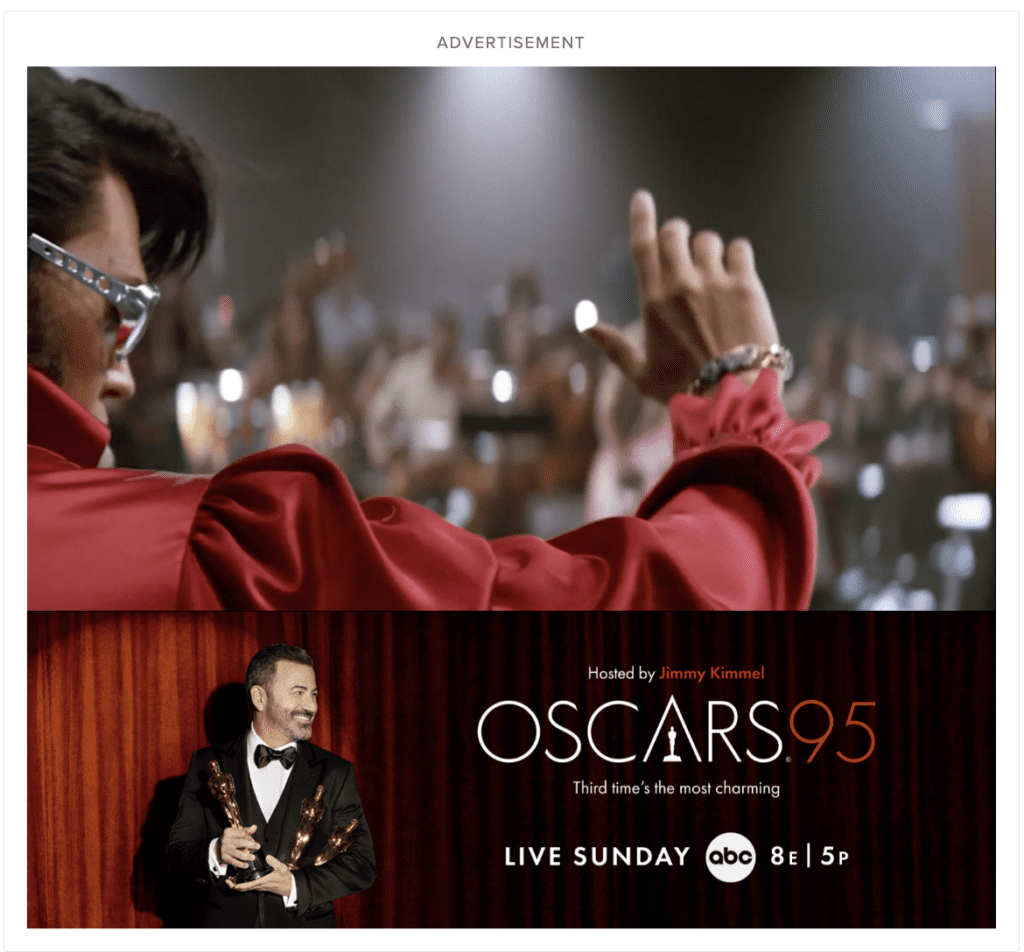
As the FTC Guide says it should be, it is written in “plain language that is as straightforward as possible.”
2. Vuori
In Vuori’s native advertising example, “Advertisement” is clearly seen below the creative. It doesn’t interrupt the user experience but is still visible.

Source: CNN
3. Holiday Inn
This native ad from Holiday Inn seamlessly blends into Hotels.com’s “look and feel.” But because “Ad” is included in the top-left corner, users know Holiday Inn paid Hotels.com for that placement.

4. Experian
This native ad from Experian on Cars.com points to an article titled, How You Could Find Your Same Auto Insurance Coverage. The ad, which falls between two organic articles, includes “Ad” in the top-right corner.

B. “Paid Advertisement”
If something is disclosed as “Paid,” that’s always a clear signal of it being an advertisement.
5. Chase
This native ad from Chase includes the disclosure “Paid Content From Chase.” This disclosure is specific, pointing directly to one of the innovative trends in native advertising and Chase as the one paying.
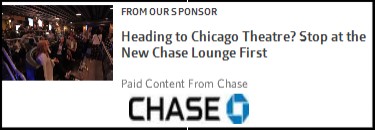
6. Siemens
This example of a native ad comes from Siemens. The ad, featured on Forbes, talks about how buildings can drive the energy transition.
Forbes includes “Paid Program” to let users know Siemens paid for the ad. That language is also on the landing page. (See below.)
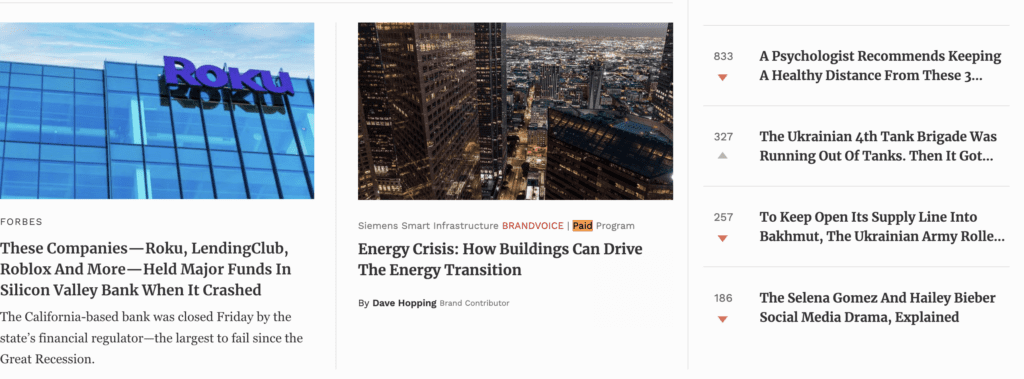

C. “Sponsored Advertising Content”
While perhaps not as on-the-nose as “Advertising” or “Paid Content,” seeing that something is “Sponsored Content” points to the fact that the brand at hand has nothing to do with the creation of the content in which the ad sits.
7. Life Seasons

Acknowledging that it is a sponsor recognizes that the ad is simply allowed to sit alongside Amazon content without any inference of contributing otherwise.
8. Tourneau
By saying “Sponsored,” the native advertising example here shows that Tourneau paid to feature its content on Facebook.
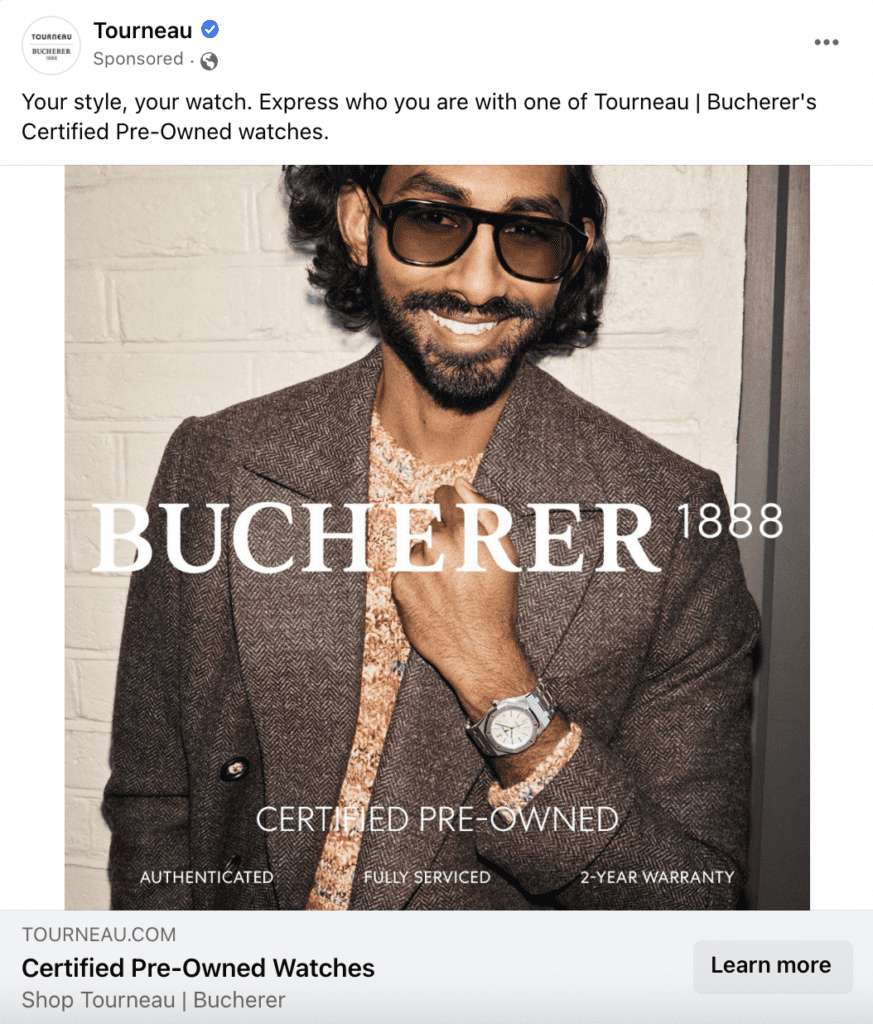
9. Dick’s Sporting Goods
In this great native advertising example, Dick’s Sporting Goods delivered an ad on Google. The ad fits into the search experience, and by using “Sponsored,” consumers know Dick’s Sporting Goods paid Google for that placement.

10. Great Britain
While readers may feel duped at first because this example feels so much like a normal article from Expedia, the term “Sponsor Content” is all readers need to recognize that this is an ad, according to the FTC.
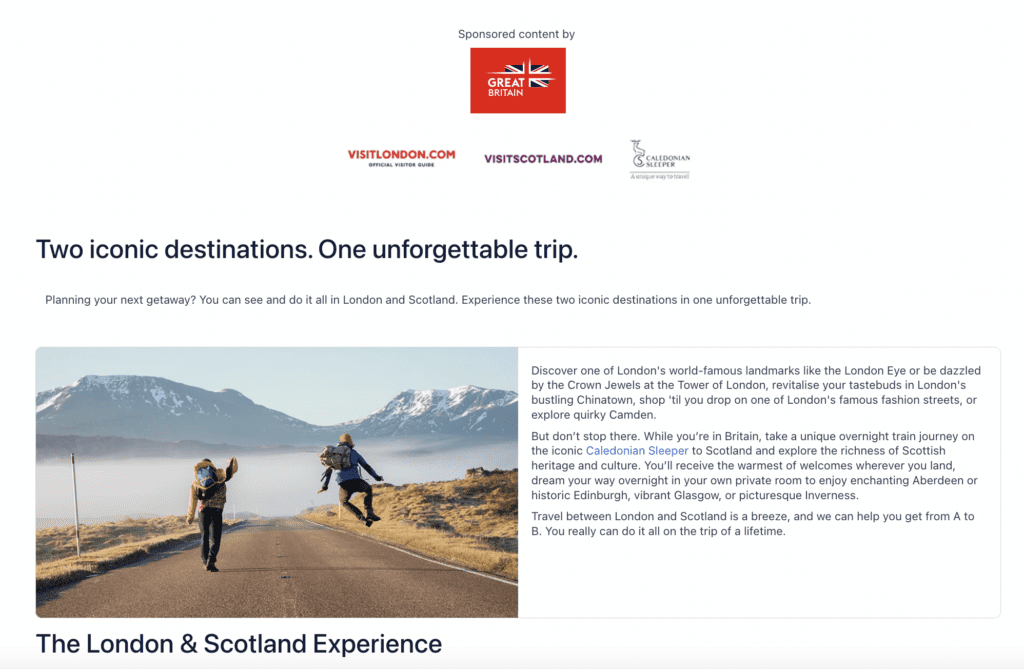
11. Coursera
This “Sponsored” native advertising example appeared in some users’ Facebook streams. Yes, Coursera wants readers to learn data analysis in part. But, more importantly, it wants them to sign up for the platform.

D. “Presented by”
Another phrase to look out for is “Presented by.”
This is the first of the “by” terms.
At first blush, “presented by” is synonymous with “promoted by” and “sponsored by;” however, it often carries a different connotation. These pieces will often have a focus more tangentially related to the brand, giving them more room for storytelling.
12. Dove
Dove ‘presented’ a story in The Telegraph’s Lifestyle section on professional golfer Lee Westwood’s parenting.
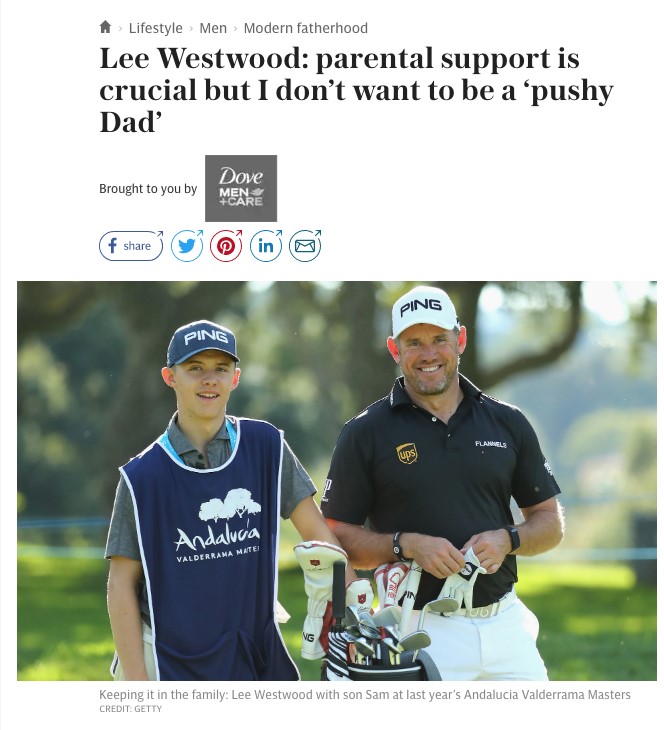
13. Circle
The ad was hosted on Reddit. The “Promoted” ad came from Circle, a company that “helps businesses and developers harness the power of digital currency stablecoins, like USDC, for payments and internet commerce.”
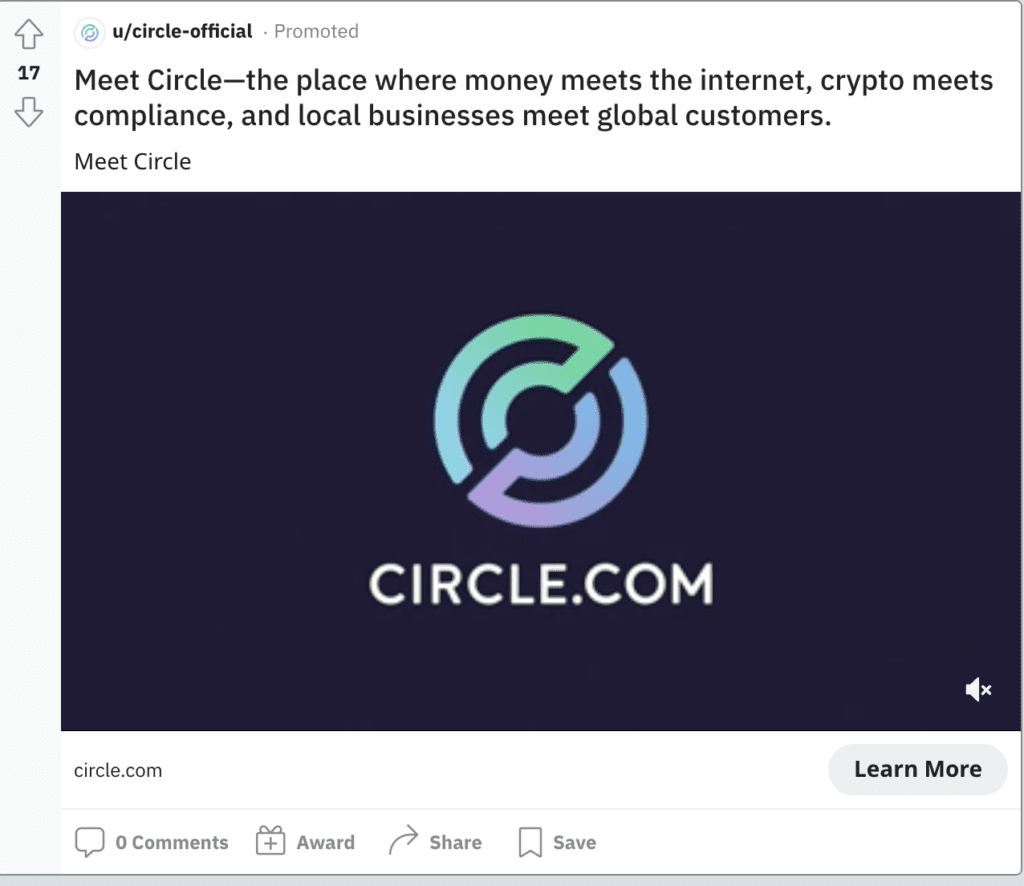
14. Nike
This SB Nation native advertising example is “Presented By” Nike. The video aims to follow six NFL stars returning to their high schools for summer football training.
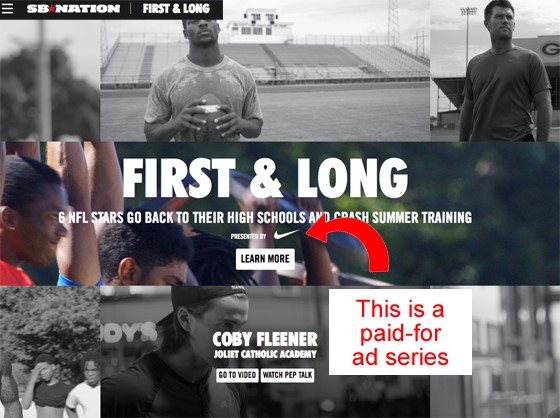
15. Meta
The content below is “Presented By” Meta because the social giant wishes to attach its name to content published on Fast Company. Fast Company also includes “Paid Content” on the landing page.

E. “Promoted by”
The inclusion of the word “by” is a way for native advertisements to be a bit more specific and separate the advertising brand (like Geico) from the publisher (like Buzzfeed).
The FTC states that disclosing an ad as just “Promoted” or as “Promoted Stories” can imply to consumers that the publisher endorses the content.
Hypothetically, if the example ad here were only to say “Promoted,” one might think that Buzzfeed is endorsing content from Geico.
16. Product Marketing Alliance
This example from Product Marketing Alliance on LinkedIn falls directly into a user’s feed, similar to native content; however, it includes “Promoted” at the top to let them know it’s an ad.
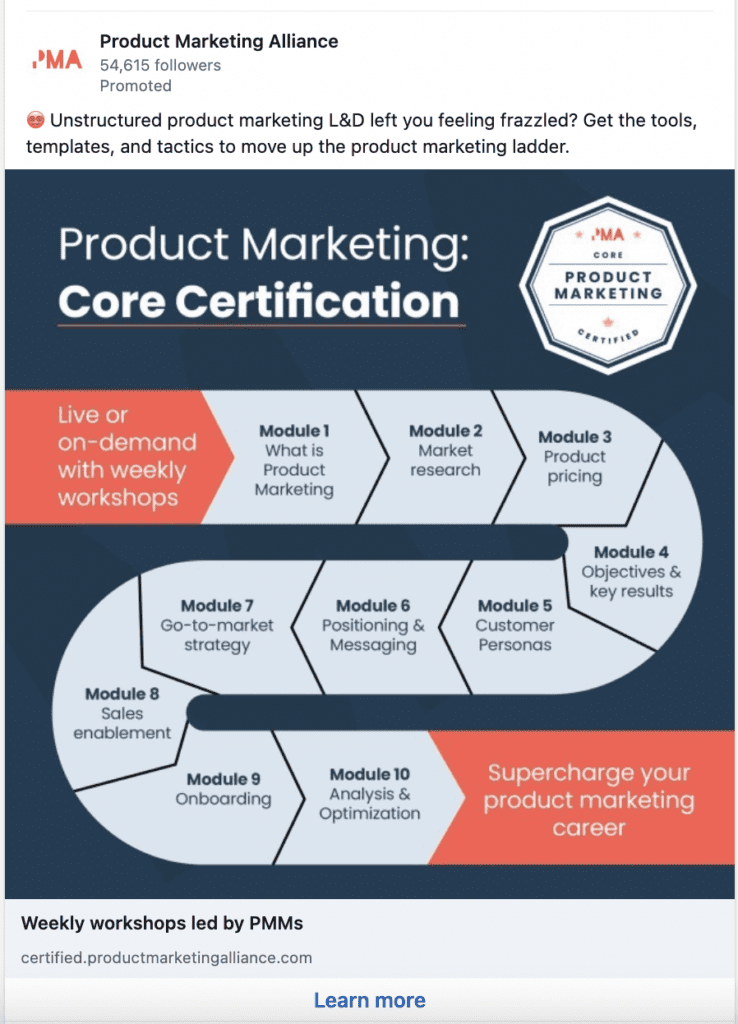
17. Twitter Small Biz
In this case, Twitter Small Biz’s Tweet says “Promoted by,” indicating that Twitter doesn’t necessarily have to endorse the content, even though both Twitter Small Biz and Twitter are divisions of the same company. It’s somewhat confusing, but that’s what “promoted by” means.
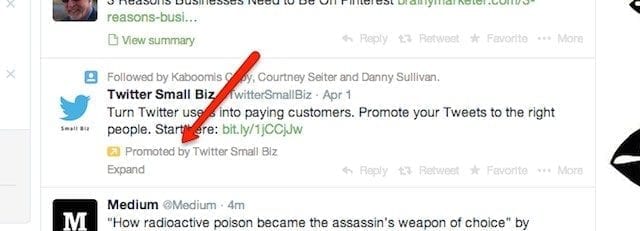
18. Google AdWords
Similarly, this native advertising example on Twitter, surrounding the best SEM practices, is “Promoted by” Google AdWords. However, Twitter, the platform where the content is displayed, isn’t obligated to endorse the post.
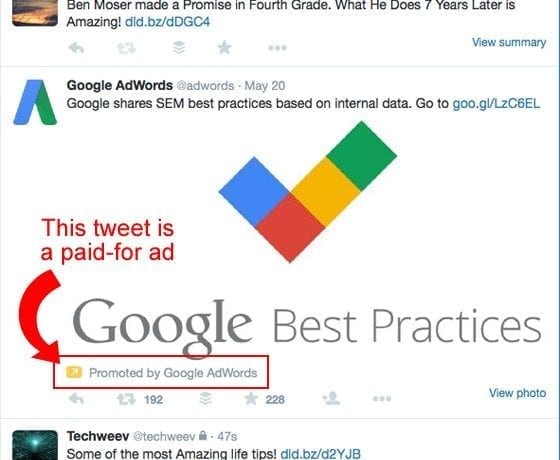
19. Honda Fit
Another native advertising example featured on Buzzfeed (but not endorsed by the publisher) was “Promoted By” Honda.
The brand enticed readers with a list of cool vintage items but more discreetly advertised the roomy nature of its Honda Fit.
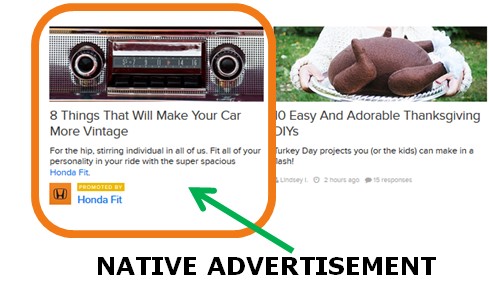
20. Volkswagen Canada
Once again, another brand (Volkswagen) uses the social media platform, Twitter, to drive users to its content hub.
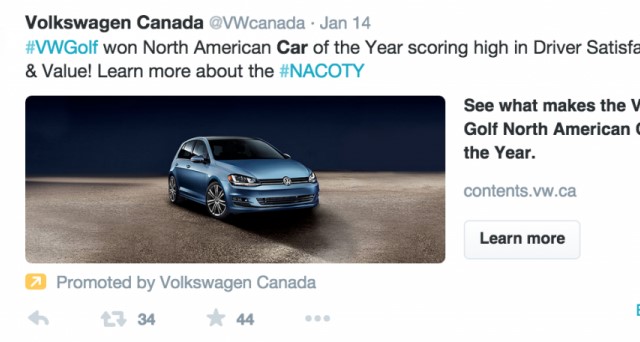
F. “Sponsored by”
Content that is “Sponsored by” a brand is another way to identify a native advertisement. And as previously mentioned, this is synonymous with content that is “presented by” and “promoted by.” It’s simply a choice of language.
21. Lexus
In this native advertising example below, an article from Lexus is “Sponsored Content.” With B2B native advertising, these articles are often presented as think pieces.
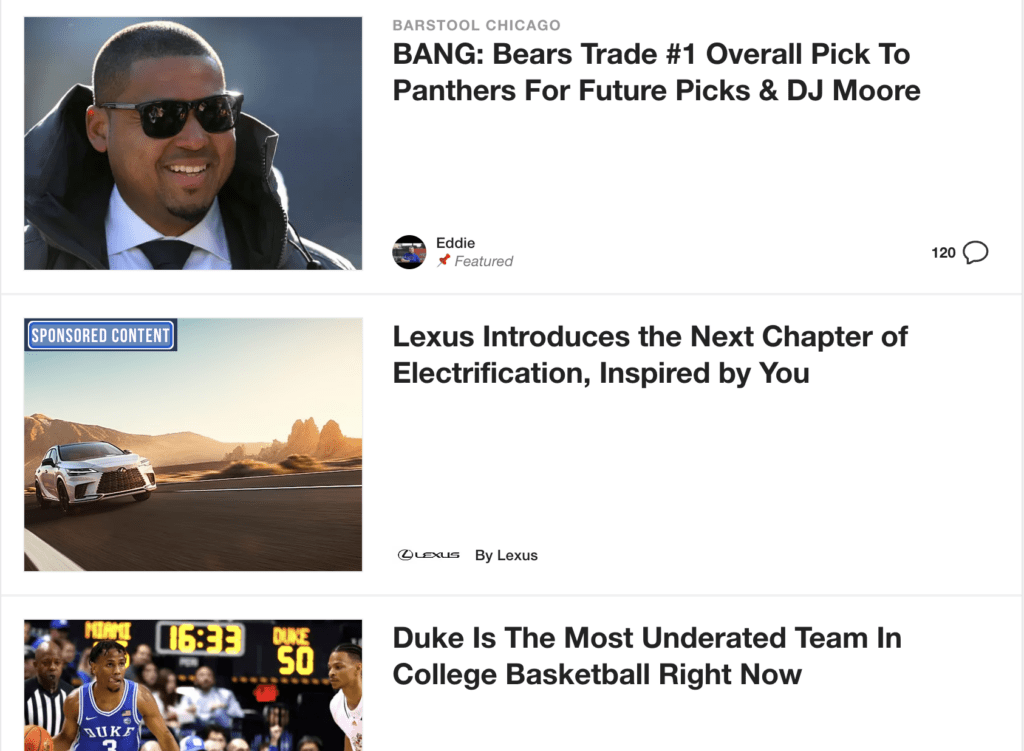
22. The Craig School
Sponsored content can also be targeted with regional publications. For example, The Craig School bought a native ad on NJ.com to promote an article about the influence of flexible seating on achievement.
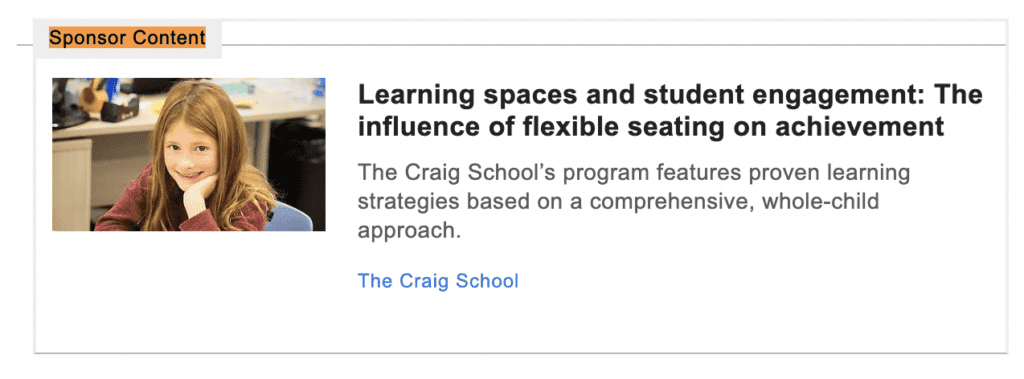
23. The Botanist
When a sponsored post is created with a publication’s creative team, the distinction between paid and unpaid content is blurred even further.
The piece on gin and tonics at Eater makes perfect sense for the publication. Without the disclaimer underneath (and clearly branded imagery), it wouldn’t even be classified as a native ad.
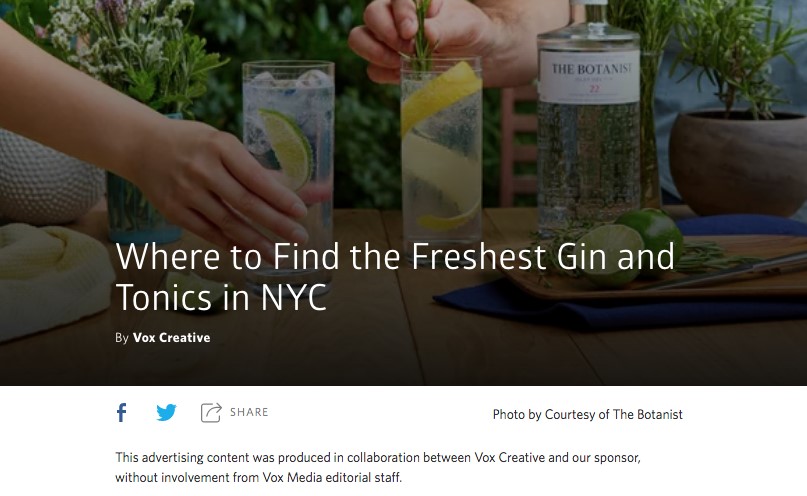
24. EcoWorld
Finally, taking this tack with native ads can make for a more elegant means of messaging.
National Geographic, for example, chooses to call this native ad article ‘partner content’ from developer EcoWorld.
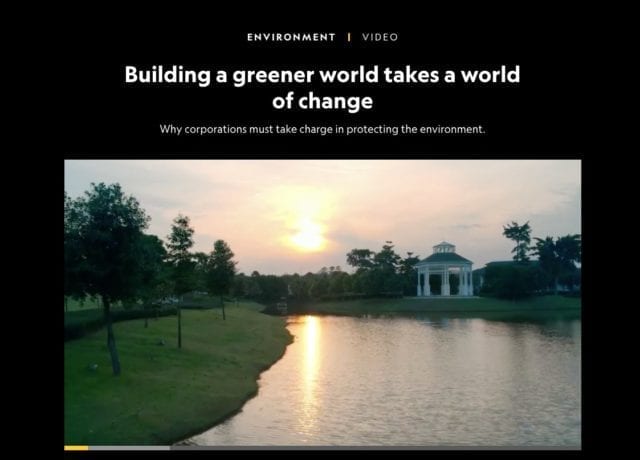
The positioning clarifies that the publication and brand have shared values, creating a natural fit for native advertising.
25. Film Supply
Below is an example of a native ad from Film Supply.
The ad, which includes “Publishing Partner,” is delivered in tandem with other native content published on Ad Age.
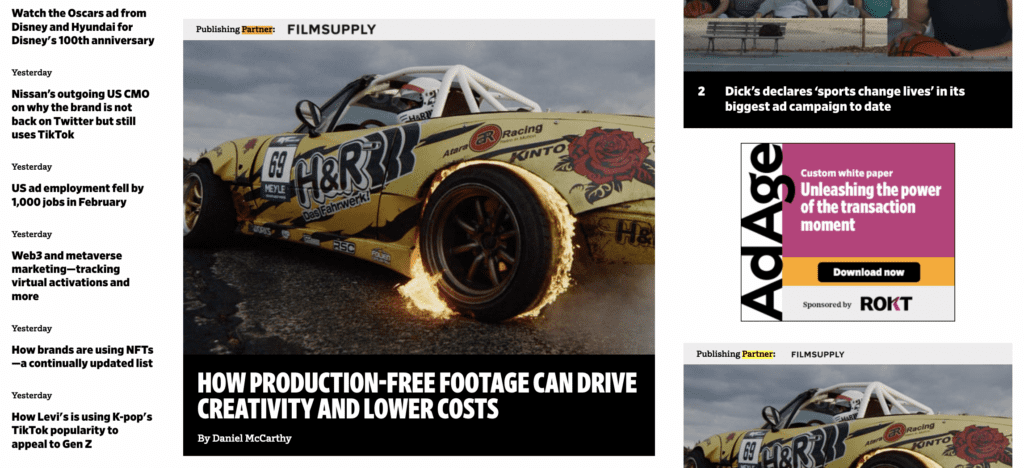
Native Advertisements: More Than the Tag
The business guidelines from the top of this guide are a good starting point for how to tag native ads.
But successful native advertising isn’t only about following those guidelines. As the examples highlighted here show, native ads are about positioning brands where and when it makes sense with the publication.
At the same time, the lines between paid ads and original content are blurring — Google, for example, announced a change to its result page that will make ads blend in more.
Brands will do well to remember that successful native ads both blend in and add value. The combination is what makes a good fit.
For more insights, sign up for MediaRadar’s blog here.
![25 Unique Native Advertising Examples — and How to Spot Them [2019 Update]](https://mediaradar.com/wp-content/uploads/2017/10/copy-of-sales-intelligence-ad-tech-blog-hero-640x460.jpg)
